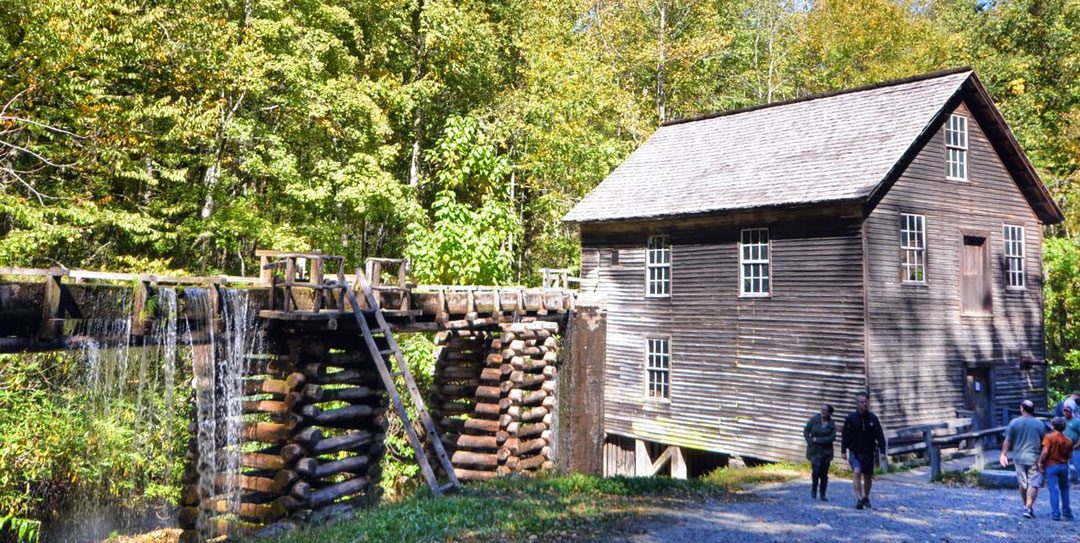
7 Things You May Not Know About Mingus Mill

Just north of Cherokee NC in the Great Smoky Mountains National Park sits a historic grist mill, Mingus Mill. Nestled on the banks of Mingus Creek, this beautiful mill still stands at its original location since 1886. Mingus Mill served the surrounding communities for more then 40 years before becoming idle in the late 30’s. More than just another mill, Mingus Mill is one-of-a-kind:
1. Slave Cemetery and the Leaving of Coins
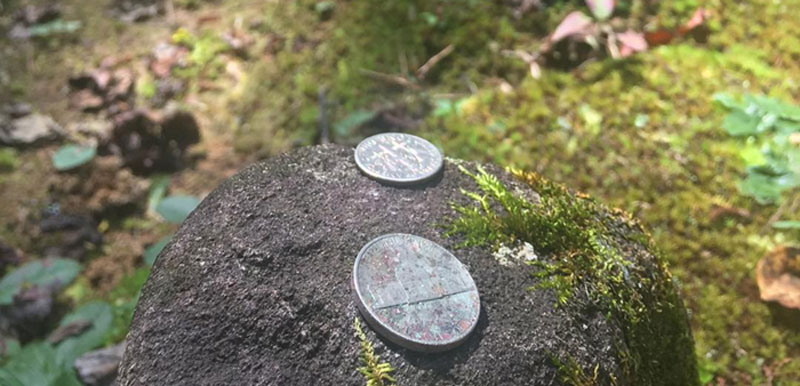
The Mingus family was one of first families to settle in the Oconaluftee river valley in 1790. It was common practice at that time for wealthy families to own slaves, and their graves can be found near Mingus Mill. It’s worth a stop at this quiet spot, which can be found atop a hill adjacent to the parking lot. To find it: At the far end of the parking lot you’ll find a gate that is the trailhead from the Mingus Creek Trail. Look for a worn path to the right of the gate that wanders about 75ft up a small hill to the cemetery. There are no names or dates, or head stones, just rocks that mark the head and feet of the graves.
Sometimes you will find coins on the graves, placed upside down. This is common of slave graveyards or cemeteries. West African slaves believed the underworld is upside down of our world and connected by water. By leaving coins in this position, you are leaving a message that you visited and paid respect. These coins are also left behind to: “pay the ferry man to safely get the departed soul to the afterlife.”
2. Fish Can Sometimes be Seen in the Flume
Mingus Mill is quite simple in certain aspects of its workings. The mill race brings water that’s diverted from Mingus Creek to the flume, where the water builds up velocity which is needed to keep the pen stock full of water during operation of the mill. During the summer months you may spot a fish in the flume, just like this brown trout.
3. Mingus Creek Trailhead
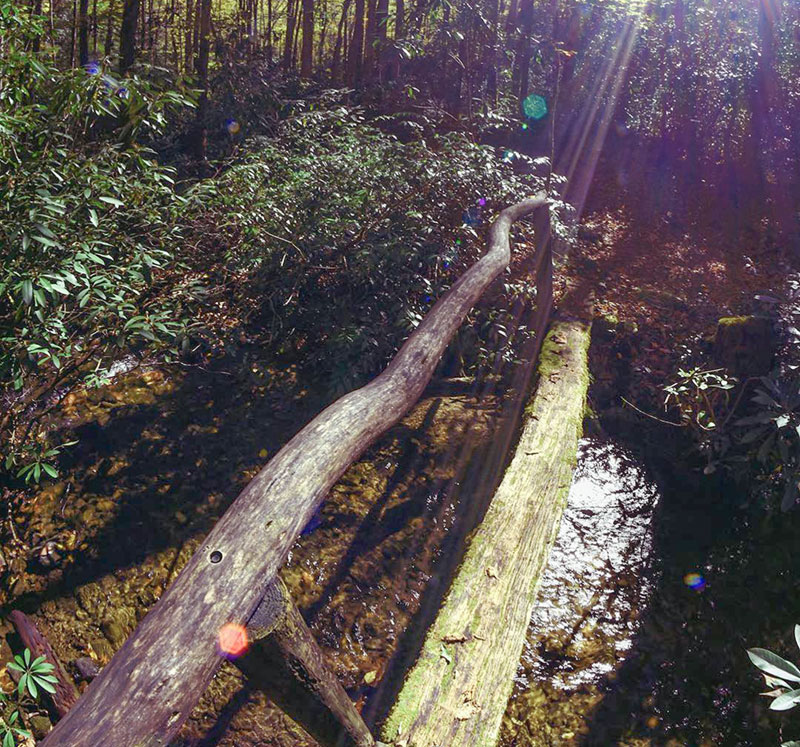
The Mingus Creek Trailhead is located at the far end of the Mingus Mill parking lot. The trail crosses Mingus Creek multiple times on wooden bridges. The trail travels 2.9 miles to the intersection of the Deep Low Gap Trail, then turns north 2.9 miles to the Thomas Divide Trail. For a longer (and possible 2-day hike) take Mingus Creek Trail to Deep Low Gap Trail to Indian Creek Trail to Deep Creek – about 10.8 miles. Backcountry shelters 51 and 46 can be accessed along this hike.
4. A Community Crossroads
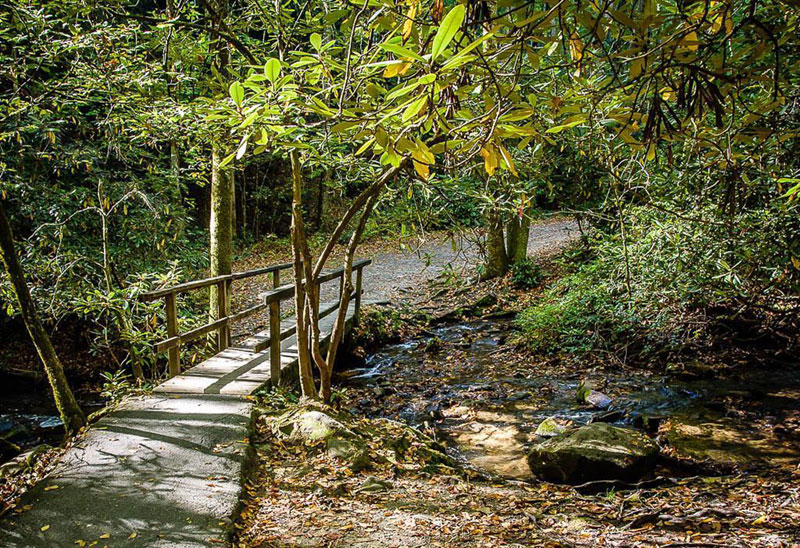
5. The Mill is Operational
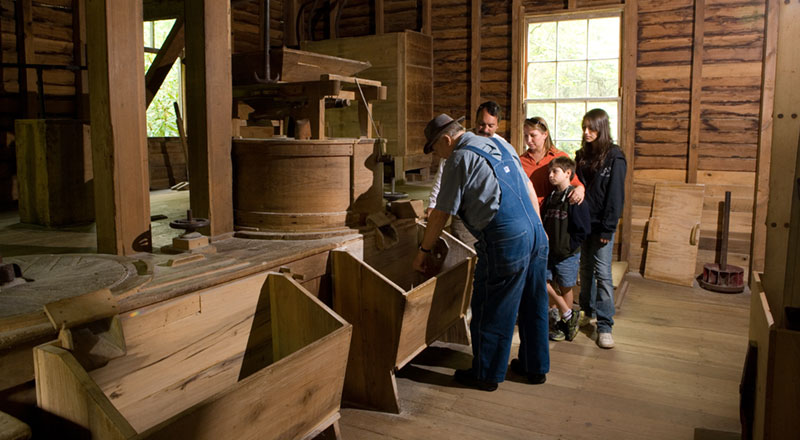
Mingus Mill provides a rare opportunity for Park visitors to get a glimpse what life was like when the North American continent was being settled. The mill is staffed by knowledgeable caretakers from April through October (and also weekends in November) who are happy to share information about the mill and perform demonstrations. Cookbooks, lye soap, wheat flour, corn meal, and informative brochures can be purchased during opening hours.
During the winter months, the interior of the mill is closed to the, however visitors are welcome to meander along the paths and structures outside the mill.
6. The Mill Was Built for Just $600
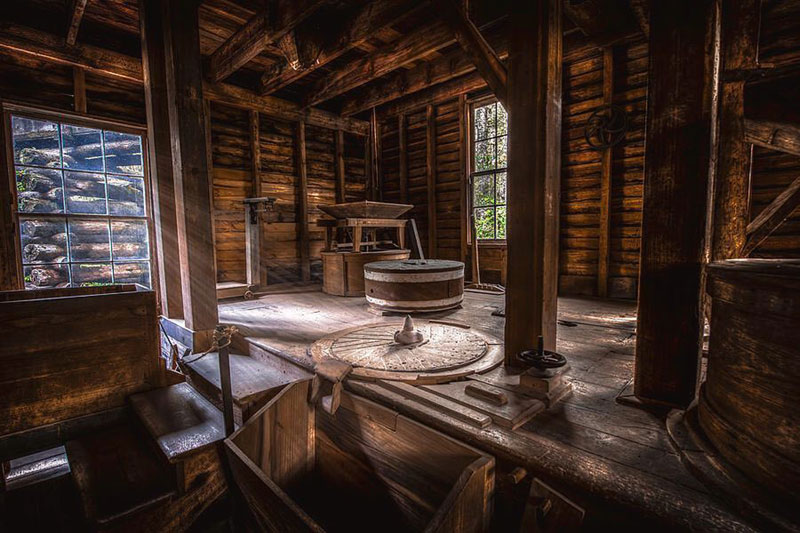
Dr. John Mingus contracted with Sion Thomas Early to build the structure, who agreed to do the job in three months for $600. His initials, “STE,” are cut into the front gable just under the eaves. The mill remained in the Mingus Floyd family hands until they sold it to the National Park in 1934. The lumber used to build Mingus Mill was harvested locally during the brief logging boom. It was milled at Smokemont which is now a campground, but at one point in time was a booming timber camp.
7. Other Nearby Cemeteries
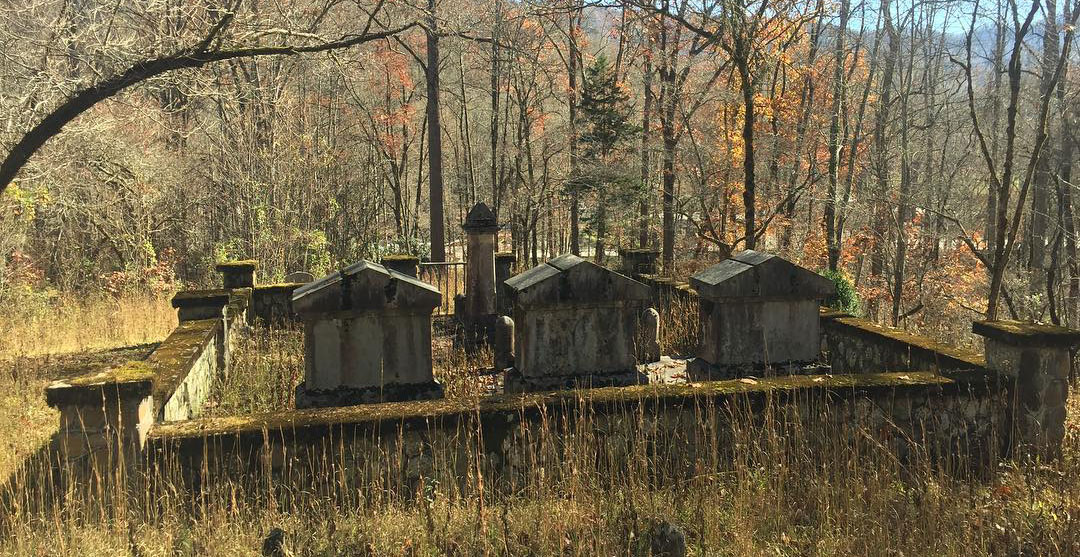
Dr. Mingus is buried at Mingus Creek Cemetery in an unmarked grave. Hike two miles up Mingus Creek Trail until you see a small “cemetery” sign next to a large pile of boulders. Follow the short path.
From the Mingus Mill entrance, drive north on the main highway and in about a minute park at the very first gravel pull-off that you come to on the right. Walk north (toward Tennessee) along the road a few yards until you are even with a speed limit sign on the opposite side of the road. Just past the speed limit sign, you will see across the highway the old road up to the cemetery angling off to the left and marked by two large stones. Only a short walk is required to reach this cemetery, perched just above the road. When the old road hairpins back to the right, you will be able to see the first gravestones just up the way.
Make sure to stop by the Oconaluftee Visitor Center at the Cherokee entrance to the park for more detailed information about nearby cemeteries. There are 13 cemeteries between the Visitor Center and the Smokemont campground.
Mingus Mill is a working piece of history that should not be missed. Be sure to walk the trail along the millrace. The beauty and surroundings at Mingus Mill might make you decide to linger a little longer than expected, as you are transported to a simpler time and place.
Ben Parker, one of the mill caretakers, also contributed to this story. You can follow Ben’s Mingus Mill stories on Instagram @mingus_mill
